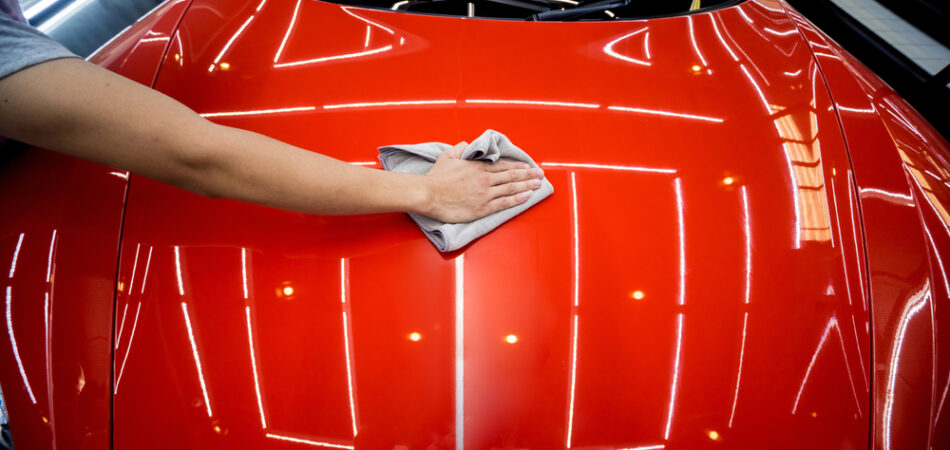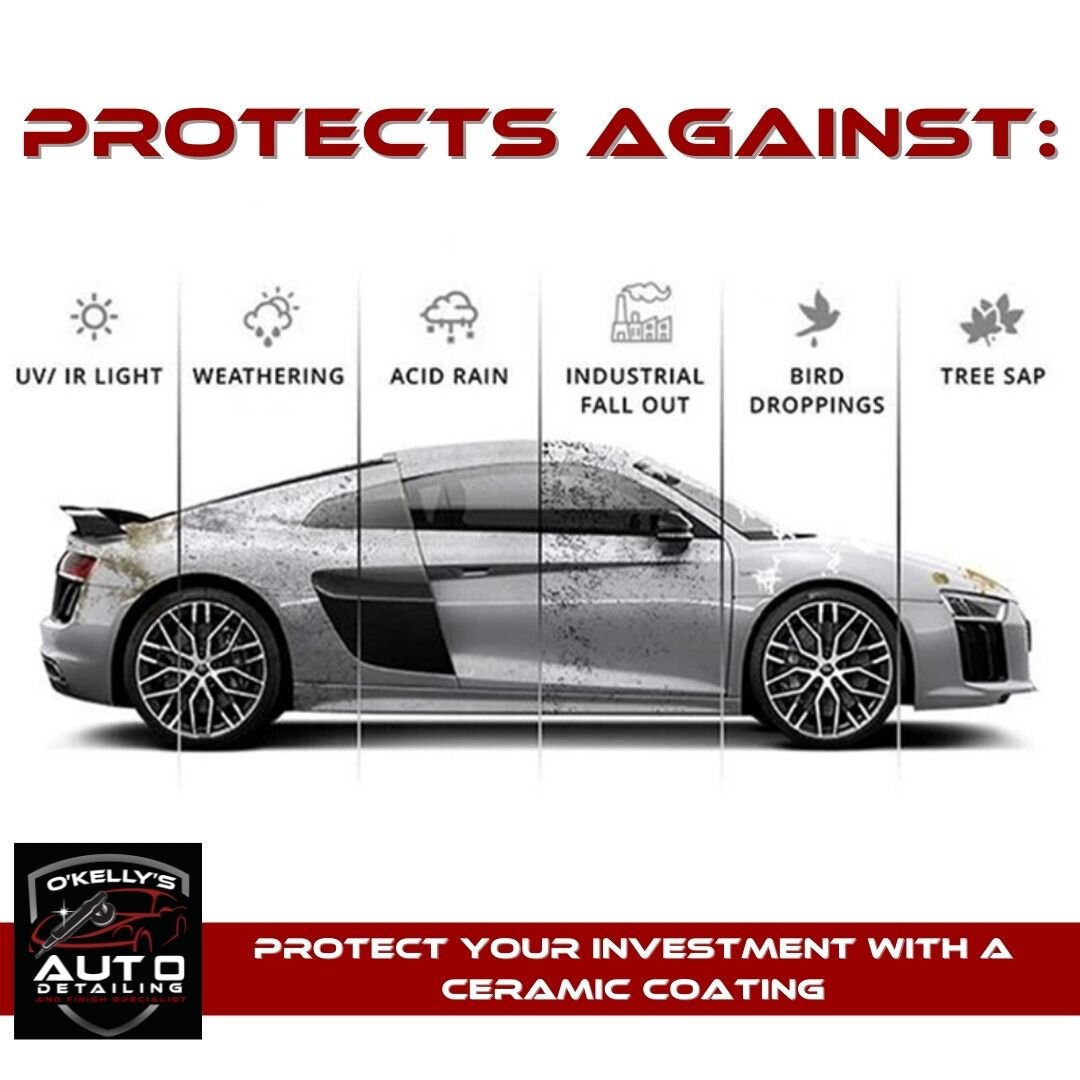Leading Ceramic Coatings San Jose Services for Automotive Excellence
Leading Ceramic Coatings San Jose Services for Automotive Excellence
Blog Article
Revealing the Science Behind Ceramic Coatings: Exactly How Does It Work and Why Is It Above Typical Alternatives?
Ceramic layers have actually been gaining appeal in numerous industries for their outstanding performance and toughness. Recognizing how ceramic coatings work and why they outmatch standard alternatives is essential for those seeking to improve the durability and durability of their materials.
The Chemistry of Ceramic Coatings
In comprehending ceramic coverings, diving into the intricate chemistry behind their structure is vital for realizing their functionality and longevity. Ceramic layers are mainly made up of silicon dioxide (SiO2), which forms a protective and solid layer when put on different surface areas. This chemical framework gives extraordinary resistance to heat, chemicals, and rust, making ceramic finishings extremely looked for after for a large range of applications.
The chemistry behind ceramic finishes entails the formation of covalent bonds between silicon and oxygen atoms, producing a rigid network that boosts the finishing's toughness and sturdiness. Furthermore, the existence of other elements such as titanium, zirconium, and aluminum further boosts the coating's buildings, providing increased solidity and adhesion to surface areas.
Recognizing the chemical composition of ceramic finishings permits the modification of formulations to match details requirements, whether it be for automotive, commercial, or property purposes. By taking advantage of the power of chemistry, ceramic finishes proceed to pave the method for exceptional security and performance in different industries.
Advantages of Ceramic Coatings

Another significant benefit of ceramic coverings is their hydrophobic nature. This building creates water to bead up and roll off the layered surface, carrying dirt and impurities with it. Therefore, ceramic coatings make cleansing and maintaining surfaces a lot easier and much less lengthy. Additionally, ceramic coverings provide enhanced gloss and color deepness, offering surface areas a lively and shiny look. In general, the wide range of benefits provided by ceramic finishes make them a premium choice contrasted to traditional covering techniques.
Just How Ceramic Coatings Bond
Ceramic finishings bond to surfaces with a procedure that includes molecular attachment and chemical communications. When a ceramic layer is used to a surface area, it develops a strong bond by chemically sticking to the surface at a molecular degree.
Furthermore, the chemical interactions in between the ceramic finishing and the surface area further improve the bond. ceramic coatings san jose. These communications enable the ceramic coating to create a continuous and seamless layer externally, providing excellent protection and longevity. Unlike standard finishings that may rest on the surface area without completely bonding, ceramic coatings develop an irreversible bond that is immune to chemicals, UV rays, and rough environmental conditions

In significance, the bonding device of ceramic finishes guarantees a reliable and long-lasting protective layer that exceeds typical covering options. This remarkable bond adds to the sturdiness, scratch resistance, and durability of ceramic finishings, making them a recommended selection for various applications.
Longevity of Ceramic Coatings
The extraordinary longevity of ceramic finishings stems from their durable molecular attachment and chemical communications with surfaces, guaranteeing a resilient protective layer that surpasses standard covering options. As soon as used, ceramic finishes create a strong bond with the substratum, creating a resistant barrier versus different environmental stress factors such as UV radiation, chemicals, and abrasions. This bond is so safe and secure that it can hold up against the roughness of daily use without weakening or deteriorating promptly.
Unlike conventional coatings that may break down over time, ceramic layers preserve their integrity for an extended period, offering long-lasting defense for the underlying surface. Overall, the remarkable durability of ceramic layers makes them a remarkable selection for protecting a wide range of surfaces in various applications.
Ceramic Coatings Vs. Traditional Options
In comparison to this website standard coating techniques, ceramic finishes supply a distinctive blend of longevity and safety capabilities that set them apart in numerous surface area protection applications. Standard choices such as wax or sealers give a short-lived layer of security that can wear off rapidly, calling for frequent reapplication. On the other hand, ceramic coatings develop a strong bond with the surface area, creating a semi-permanent or permanent barrier that is highly resistant to abrasion, chemicals, UV rays, and extreme temperature levels.
Moreover, ceramic layers provide premium hydrophobic buildings compared to typical finishings. The hydrophobic nature of ceramic layers creates water to bead up and roll off the surface, sites lugging dirt and impurities with it. This self-cleaning impact helps to maintain the surface area's sanitation and gloss for extended durations, reducing the requirement for frequent maintenance.
In addition, ceramic layers have a thicker layer compared to typical alternatives, giving boosted scrape resistance and security versus minor influences. This longevity ensures resilient performance and aids maintain the aesthetic allure of the dealt with surface area for an extensive period.
Final Thought
To conclude, the scientific research behind ceramic finishes depends on their chemical structure and bonding properties, making them above typical choices. The benefits of ceramic finishings include increased resilience and defense for surface areas. By comprehending just how ceramic finishings job and their benefits over conventional useful reference choices, one can make enlightened decisions when considering covering choices for numerous applications.
Unlike standard layers that may sit on the surface without fully bonding, ceramic finishes create a permanent bond that is immune to chemicals, UV rays, and extreme ecological problems.
The remarkable longevity of ceramic finishings stems from their robust molecular bond and chemical interactions with surfaces, making certain a resilient protective layer that exceeds conventional coating options.Unlike typical layers that may degrade over time, ceramic coatings preserve their honesty for an extended duration, offering lasting protection for the underlying surface.In contrast to traditional finishing techniques, ceramic finishings use a distinctive mix of resilience and safety abilities that set them apart in various surface area protection applications. By recognizing just how ceramic coatings job and their benefits over standard alternatives, one can make informed decisions when taking into consideration finishing choices for different applications.
Report this page